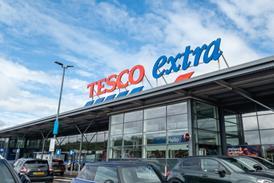How can retailers effectively tackle ecommerce and make a profit? The answer is in the efficiency of the modern-day supply chain.
The world of ecommerce is thriving and is here to stay. With increasing access to online retail, consumers have come to expect convenience as standard, with high quality, low cost goods delivered as and when they wish. So it’s important for the omnichannel retailer to have a delivery solution that properly reflects the needs and preferences of the modern-day customer, if they want to compete online and in store.
While progress has been made, designing an ecommerce supply chain solution that benefits the bottom line and the customer is still a challenge
Jonathan Pilbro, DHL

While progress has been made, designing an ecommerce supply chain solution that benefits the bottom line and the customer is still a challenge. With the majority of existing retail operating models originating from those designed for a bricks-and-mortar environment, it’s not surprising that a recent global survey conducted by Ernst and Young revealed that 86% of retailers think that existing supply chains aren’t capable of delivering a truly successful omnichannel offering. Achieving profit in ecommerce, or even to break even, can be elusive.
Profit solutions
However, there are solutions to the profitability challenge. As traditional operating systems are replaced with new omnichannel retail supply chain models for our times, we are seeing a turnaround in fortunes. Here are a few of the elements which would need to be incorporated:
- An omnichannel strategy: with the retailer’s omnichannel strategy as its foundation, the supply chain design will be effective, efficient and fit for purpose.
- The best fit for the business: with the complexities of the omnichannel supply chain network, its design must reflect the value proposition of the business, from its inventory processes to service speed and value.
- Customer satisfaction: a successful omnichannel supply chain solution will offer the right range of delivery options and speeds. With variety comes additional cost, so a delicate balance must be reached which fits with the retailer’s value proposition.
Jonathan Pilbro, vice-president for business development retail for the UK at DHL. To contact him click here.





























No comments yet